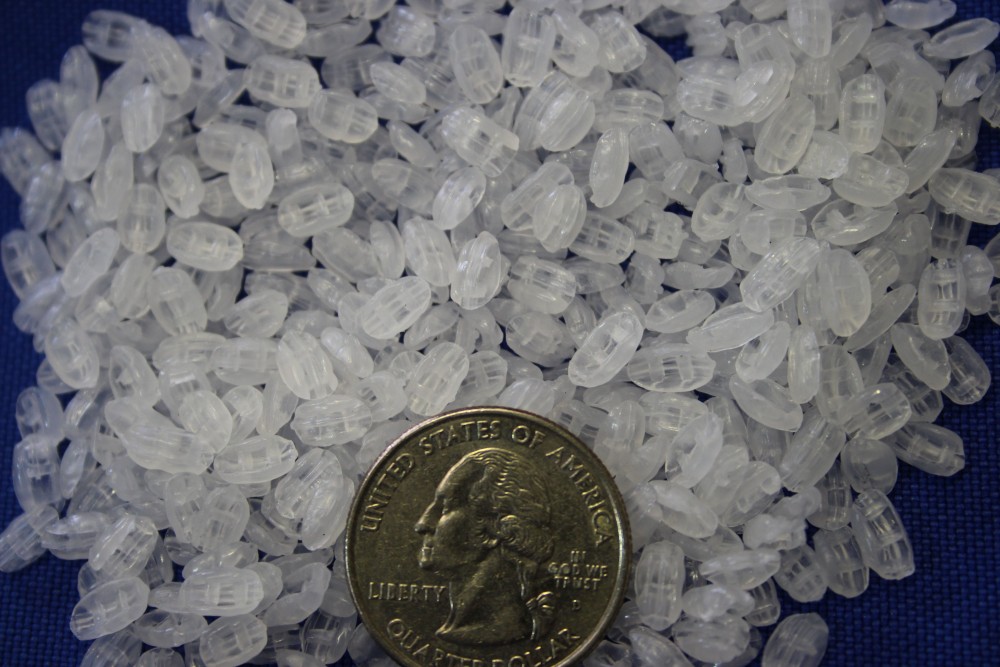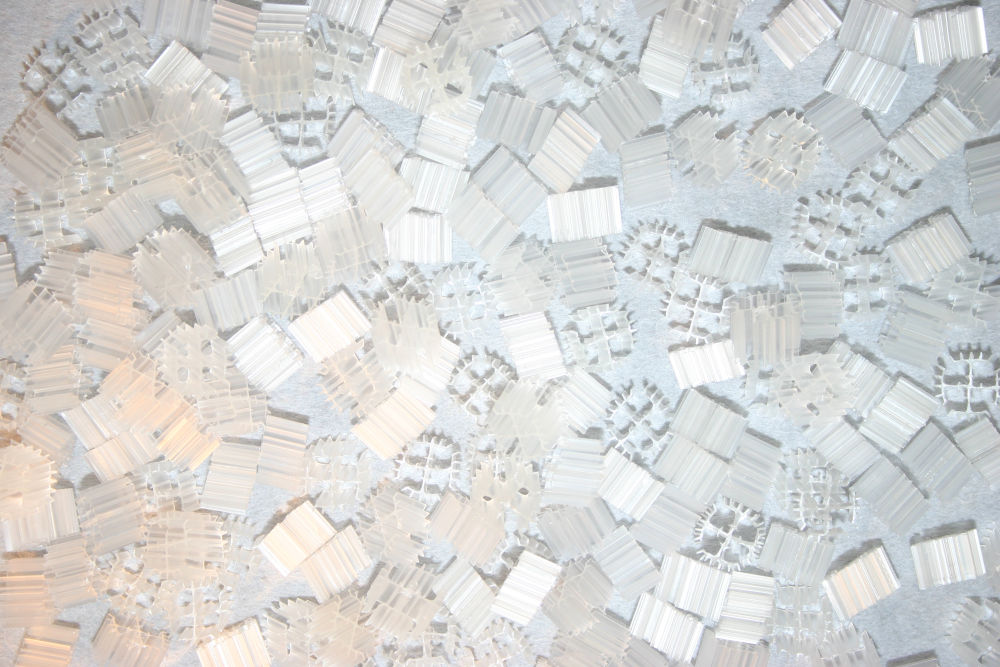Bead Filter Media
AST Filter Media
Standard Bead Media performs biological and mechanical filtration and never needs replacing. These specially sized media are made of low density polyethylene, a plastic commonly used in food packaging. These beads float in the top of the filter, allowing water to pass through with minimal head loss, while trapping solids. The plastic media provides an attachment area for nitrifying bacteria to break down toxic fish wastes, ammonia and nitrite.
Standard Filter Media provides:
+ Excellent Biological Filtration
+ Superior Solids Removal
+ Low Head Loss
+ Superior Solids Capture
+ Low Water Loss (1-10% that of sand filters)
+ Never Needs Replacing
Enhanced Media provides all of the same great benefits plus:
+ Robust Biofiltration (50% boost over Standard Media)
+ Protects the Biofilm from Frequent Backwashing
Enhanced media is shaped to protect the bio-film from abrasive backwashing. This makes it suitable for systems requiring frequent backwashing that have high biofiltration requirements, eliminating the need for moving bed bioreactors in many applications.
Clarification
Clarification is the process of removing solids from water. Suspended solids in an aquatic system are generally small particles <100 microns of undigested or partially digested food, bacteria, algae, clay and silt suspended in the water column. Fine suspended solids case gill irritation and reduce the clarity of the water, whereas large organic particles create a serious waste load problem by consuming tremendous amounts of oxygen, adversely effecting the water quality. Bead filters remove suspended solids by at least four different mechanisms as water is passed through the packed bed of beads. Particles >100 microns are subjected to physical straining. For slightly smaller particles(50-100 microns) the dominant mechanism is settling. Suspended particles (5-50 microns) are removed by interception, a subtle process caused by collisions between the particle and the bead media surface. Finer particles (<20 microns) are removed through bioabsorption, the capture of particles by the bacteria biofilm. Bead filters are excellent clarification units, capable of maintaining display quality water at high waste loading rates. Studies have shown that AST bead filters capture 100% of particles >50 microns and 48% of particles in the 5-10 micron range per pass.
Better Than Sand
Bead Filters were originally invented to overcome some of the major problems with using sand filters. Compared to sand filters, bead filters are immune to biofouling, never requiring replacement of the bead media. They also minimize water usage and reduce energy costs by lowering pump head requirements. Backwash water loss rates for Propeller Bead® Filters are as low as 10% and PolyGeyser® Bead Filters are as low as 1% of those experienced by typical sand filters.
About Bead Filters
Bead filters capture solids, while simultaneously providing a large surface area (400 ft2 /ft3 ) for the attachment of nitrifying bacteria which remove dissolved nitrogenous wastes. Bead filters are bioclarifiers, performing both biofiltration and clarification in a single unit. Bead filters are distinguished from other filters by the use of plastic floating granular filter media. Water from the aquatic system passes up through the floating bed of plastic beads.
Let's Discuss Your Project
From a simple filter to a complete custom system, our engineers can help you find the perfect filtration system for your needs. Get in touch today!



